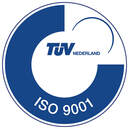3 Comments
In cooperation with Global Data Burst Ltd., GTTSystems is the first company that actively tested the Iridium’s BURST service. During these tests we found out that penetration of the BURST signals into buildings, strongly depends on the elevation of the satellite. At very low elevation angles of the satellite, it is likely that the signal must travel a longer distance through building’s construction materials and therefore suffer additional loss compared to signals from satellites that are overhead. This can lead to situations where critical lifesaving messages will not be received.
To overcome this issue and enhance the overall system’s performance, GTTSystems (in cooperation with Leap Development) developed GDB Boost, an indoor signal booster, to complement the GDB pager. The engineering team were tasked with creating a product which; “was simple to install”, “did not use any energy” and “must be user friendly”. Our awesome team of engineers, of course delivered on all three major requirements and developed a solution where two passive Iridium antennas are connected through a coaxial cable. So, how does it work? An outdoor magnetic antenna is placed outside to receive the Burst signal and an indoor antenna retransmits the Burst signal to the GDB Pager. Users simply place the GDB Pager on top of the indoor antenna to boost the signal. Depending on the connecting coaxial cable, the transmission can travel between the indoor and outdoor antennas by up to 20 metres! Indoor performance tests of the Iridium Burst service, with high number of GDB Pager messages sent, have shown a high reliability. With such a high degree of reliability, the GDB Pager combined with GDB Boost, using the Iridium Burst service, is a serious candidate for pager applications where reliability is of the utmost importance. |
Jan ten ThijeWrites about choosing the right (satellite) network to suit your needs. Archieven
March 2022
Categorieën |
AddressZweedsestraat 8A26
7418 BG Deventer The Netherlands |
Telephonetel: +31(0)570 606088
|
|









 RSS Feed
RSS Feed
